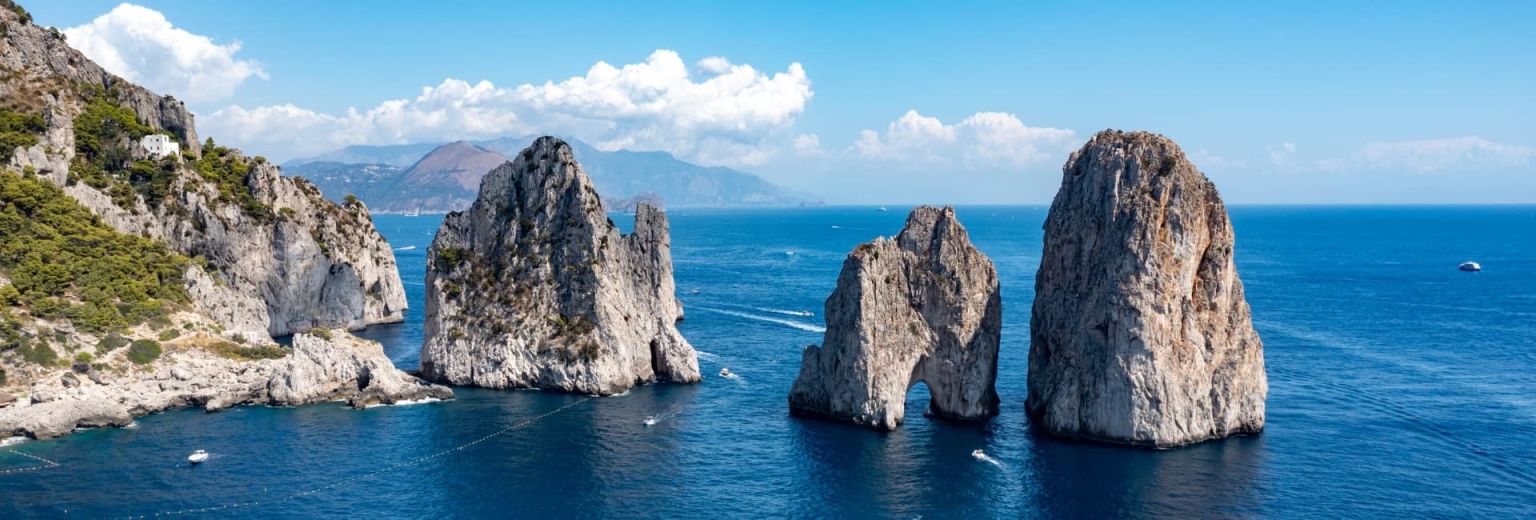Italy welcomes millions of travelers in 2025, but before booking that romantic villa in Tuscany (that you have dreamed of) or planning a gondola ride in Venice, it is essential to understand the entry rules that are more relevant than ever today.
With the introduction of new regulations such as ETIAS and EES, many tourists have different questions: do you need a visa, a new authorization, or something completely different? Let's start by clarifying this bureaucratic fog.

Initial information on the visa to travel to Italy

A visa to travel to Italy is a traditional travel authorization that many non-EU citizens need when planning to stay in Italy or the Schengen Area for more than 90 days, or when traveling for purposes like work or study. It involves applying through a consulate, providing documentation, and waiting for approval. However, not everyone needs this type of visa, especially for short-term travel.
In contrast, ETIAS (the European Travel Information and Authorization System) is not a visa. It’s a pre-authorization system introduced by the European Union to increase border security. Starting in mid-2025, citizens from over 60 visa-exempt countries, including the United States, Canada, Australia, the United Kingdom, Japan, and South Korea, will need an approved ETIAS before entering Italy or any other Schengen Area country. While ETIAS is relatively simple to obtain online, it is mandatory and linked electronically to the traveler’s passport.
Then there is EES, the Entry/Exit System, which becomes operational in late 2025. This digital system will automatically track the exact duration of every non-EU visitor’s stay in the Schengen Area, replacing the outdated manual passport stamping system. The EES will register biometric data like fingerprints and facial images at border crossings and ensure compliance with the Schengen 90-day rule.
Many travelers will interact with both ETIAS and EES. For example, a U.S. tourist visiting Rome in October 2025 must apply for ETIAS before travel, and then upon arrival, their entry will be logged via EES. These changes aim to streamline border security while making the rules more transparent. However, the transition period will likely be confusing for many travelers, especially those used to entering Italy with just a passport.
In summary:
1) ETIAS is for travelers from visa-exempt countries.
2) EES applies to all non-EU citizens.
3) A visa to travel to Italy remains necessary for those from non-exempt nations or staying longer than 90 days.
In the following sections, we’ll guide you step-by-step based on your nationality, travel duration, and purpose—because the last thing you want is to be turned away at the airport over paperwork!
Listen to the podcast version of the article with the voice of Monna Lisa & Leonardo
Requirements for the travel visa to Italy based on nationality

Do you dream of strolling through the streets of Rome, sipping an espresso at a Venetian café, or exploring the rolling hills covered with vineyards in Tuscany? Before packing your bags, there’s one fundamental question you need to answer: do I need a visa to travel to Italy? The answer depends entirely on your nationality; this guide will help you navigate the complex but accessible entry requirements for Italy in 2025.
Italy, as part of the Schengen Area, follows a shared set of rules regarding borders and visas that apply to 26 European countries. This means that the rules for entering Italy are not just "Italian" but valid for the entire Schengen area. Whether you’re a traveler who loves backpacking adventures or an organized tourist down to the last detail, understanding your visa status is the first step toward a smooth and stress-free Italian adventure.
Let's look at the details based on nationality, who can travel without a visa and who needs to apply in advance, using the latest regulations and information.
Our goal? To help you avoid surprises at the border and make the visa application process as clear as possible.
Visa-exempt countries – who can travel freely?
Citizens of over 60 countries currently enjoy visa-free access to Italy, which means you can enter for tourism, business, or family visits for up to 90 days within a 180-day period, no paperwork required — at least for now.
This list includes most Western countries, parts of Asia, and South America.
Some key visa-exempt countries for Italy include:
- United States
- Canada
- Australia
- United Kingdom
- Japan
- South Korea
- Brazil
- Argentina
- Israel
- Singapore
These countries are part of what’s known as the visa-exempt list, allowing their citizens to enjoy Italy without a prior visa — but there’s a catch: the Schengen 90‑day rule.
This rule means you can only stay in the entire Schengen Zone (not just Italy) for up to 90 days within any rolling 180-day window.
What documents do visa-exempt travelers need?
Even if you don’t need a visa, Italian border officials may ask for:
1. A valid passport (issued within the last 10 years and valid for at least 3 months after your intended departure from the Schengen Area);
2. Proof of return or onward travel;
3. Proof of accommodation (e.g., hotel reservation or invitation letter);
4. Travel insurance covering at least €30,000 in medical expenses;
5. Sufficient financial means for the duration of your stay.
You might not be asked for all these documents, but you are expected to have them ready if requested. It's not uncommon for travelers to be denied entry for not having a return ticket or proof of funds, even if they are from visa-exempt countries.
A note on digital nomads and long stays
Are you a digital nomad? If you're planning to stay in Italy longer than 90 days, whether for remote work, study, or retirement, you’ll need a national visa (also known as a type D visa), which is separate from the Schengen tourist visa system.
Each long-stay visa has its own set of requirements and procedures, often handled through your local Italian consulate.
What documents do visa-exempt travelers need?
Even if you don’t need a visa, Italian border officials may ask for:
- A valid passport (issued within the last 10 years and valid for at least 3 months after your intended departure from the Schengen Area);
- Proof of return or onward travel;
- Proof of accommodation (e.g., hotel reservation or invitation letter);
- Travel insurance covering at least €30,000 in medical expenses;
- Sufficient financial means for the duration of your stay.
You might not be asked for all these documents, but you are expected to have them ready if requested. It's not uncommon for travelers to be denied entry for not having a return ticket or proof of funds, even if they are from visa-exempt countries.
US/Canada/Australia: visa-free for up to 90 days – Do US citizens need a visa for Italy?

One of the most common questions we receive at Visit Italy is: “Do US citizens need a visa for Italy?” The good news is no — at least not for short trips. If you’re from the United States, Canada, or Australia, you can travel to Italy without a visa for up to 90 days within any 180-day period, for tourism, business meetings, or short educational courses.
This visa-free access makes Italy a top destination for North American and Australian travelers, whether you're planning a two-week vacation or an extended European tour. But the 90/180 rule applies to all Schengen countries combined, so you can’t spend 90 days in Italy and then immediately move to France or Spain without leaving the Schengen Area.
Key entry requirements for Americans, Canadians, and Australians
Even without a visa, travelers from these countries must comply with certain conditions at the Italian (or any Schengen) border:
- Passport validity: Must be valid for at least 3 months beyond your planned departure date from the Schengen Zone. Ideally, it should also be less than 10 years old.
- Return or onward ticket: Proof that you’ll leave the Schengen Area within 90 days.
- Financial means: Italian border agents might ask how you plan to support yourself — especially if you're entering without pre-booked accommodations.
- No overstays allowed: Overstaying the 90 days can result in fines, deportation, and future bans, even if accidental.
While border checks are often quick and friendly, travelers are responsible for knowing and following the rules. Italy may be warm and welcoming, but Schengen regulations are strictly enforced.
What about multiple entries?
Here’s a common scenario: You spend 45 days in Italy, then fly to Morocco, and later return to Italy for another 30 days. Is this allowed? Yes — as long as the total doesn’t exceed 90 days within any 180-day period.
A helpful tool is the Schengen 90/180 calculator, available online, which helps track your stay. We recommend bookmarking it, especially if you're planning a long European journey with multiple stops.
The changes expected for 2025
While the current visa-free system remains in place, things are set to change in late 2025 with the introduction of ETIAS (European Travel Information and Authorization System). Though it’s not a visa, ETIAS will require travelers from visa-exempt countries like the US, Canada, and Australia to register online and pay a small fee before entering Italy.
We’ll dive deeper into ETIAS Italy 2025 in a dedicated section, but in short: the visa-free regime stays, but you’ll need to pre-authorize your entry once ETIAS goes live.
Non-exempt countries: need Schengen visa – Schengen visa guide 2025

For travelers who need a visa to go to Italy, the procedure for applying for a Schengen visa may seem complex — but don’t worry. In this section of our Schengen visa guide 2025, we will walk you through the process step by step in a practical, clear, and easy-to-follow manner.
A Schengen visa allows access not only to Italy but to all the countries in the Schengen area — for a maximum of 90 days within a 180-day period. Whether you are planning to visit relatives, go on vacation, or participate in a short cultural exchange, this visa is your key to legally entering Italy.
Step-by-step guide to apply for a Schengen visa to Italy
1. Determine your visa category
For most tourists and short-term visitors, you’ll be applying for a Type C short-stay visa. If you’re visiting for conferences, family visits, or medical reasons, the form may require specific additional documents.
2. Book your appointment in advance
Depending on your country of residence, you’ll need to schedule an appointment with the nearest Italian consulate or an authorized visa application center such as VFS Global. In high season, slots can fill up weeks in advance.
3. Prepare your documentation carefully
You will typically need:
- A valid passport (with at least 3 months’ validity beyond your return date).
- A completed and signed application form.
- Recent passport-style photos.
- Proof of accommodation in Italy (hotel booking or invitation letter).
- A full round-trip travel itinerary.
- Proof of financial means (bank statements, proof of employment or sponsorship).
- Travel insurance with a minimum of €30,000 coverage.
- A cover letter explaining your purpose of travel.
4. Pay the visa fee
As of 2025, the standard fee is €80 for adults, with reduced fees for minors or students in some cases. The fee is non-refundable, even if your application is rejected.
5. Attend your biometric appointment
All applicants must appear in person to provide fingerprints and a facial scan. If you’ve applied for a Schengen visa in the last 5 years, you may be exempt from this step — but confirm with your consulate.
6. Wait for processing
The visa processing time is typically 15 calendar days, but this can extend during peak periods or if your application requires further scrutiny. Plan ahead.
Tips to increase your chances of approval
- Double-check your documents before submitting: missing paperwork is the #1 cause of delays.
- Be consistent in your itinerary: if your flights and hotel reservations don’t align, it may raise red flags.
- Show ties to your home country: such as a job, family, or property — this reassures the consulate of your intent to return.
- Avoid forged or misleading documents: Even one false statement can result in being blacklisted from the entire Schengen Zone.
What to do if your visa is refused?
Receiving a denial can feel like a setback, but it’s not the end of the road. You will receive a written explanation and can often appeal the decision or reapply with stronger documentation. Common rejection reasons include:
- Lack of sufficient funds.
- Inadequate documentation.
- Doubts about the applicant’s intention to return.
- Travel insurance not meeting Schengen requirements.
At Visit Italy, we help demystify this process. From sample cover letters to document checklists, we’re here to make your visa journey to Italy a confident one.
Common mistakes – Avoid issues with your visa to travel to Italy

Whether you're applying for a Schengen visa or entering Italy visa-free, mistakes can ruin your trip before it even starts. Every year, thousands of travelers are denied entry or fined due to oversights that could have been easily avoided.
This section breaks down the most frequent — and costly — travel errors, and shows you how to avoid them.
1. Ignoring the Schengen 90-day rule
One of the biggest mistakes by travelers from visa-exempt countries Italy is assuming they can hop between Schengen countries indefinitely. They forget the 90/180 rule, which limits your total stay to 90 days within any 180-day period.
Even if you enter Italy legally, overstaying by just a few days can result in:
- A fine.
- Immediate deportation.
- A ban from reentering the Schengen Area for up to 5 years.
Make sure to track your days carefully. Use Schengen day calculators online and factor in any recent travel to other European countries in the area.
2. Entering with an invalid passport
Many travelers overlook the passport validity rules. To enter Italy, your passport must be:
- Issued within the last 10 years.
- Valid for at least 3 months after your planned departure from the Schengen Zone.
If your passport doesn’t meet these criteria, you may be denied boarding by your airline or turned away at the border.
3. Not knowing about ETIAS Italy 2025
While ETIAS is not yet active, it’s expected to launch by late 2025. Some travelers mistakenly assume that ETIAS is already in effect and get confused by outdated or speculative information.
Until then, travelers from visa-exempt countries don’t need to register, but it’s vital to stay updated. Once ETIAS becomes mandatory, arriving without pre-authorization will result in denied boarding.
4. Submitting incomplete visa applications
If you need a Schengen visa and your documents are inconsistent or incomplete, your application will almost certainly be refused. This includes:
- Mismatched dates between flight and hotel bookings.
- Lack of financial proof.
- No insurance or underinsured policy.
- Missing biometric appointment.
Every detail matters — and rushing your application is a recipe for problems.
5. Not having proof of purpose or accommodation
Even travelers from visa-exempt countries might be asked to show proof of where they’re staying. A printed hotel booking, Airbnb confirmation, or invitation letter from a host is enough — but not having one could raise suspicions and result in denied entry.
Tips & checklist – Prepare for your visa to travel to Italy

Whether you're applying for a visa or entering as a tourist, planning ahead is key to avoiding travel headaches. Use this final section as a smart traveler’s checklist — and remember: the more prepared you are, the smoother your trip will be.
Plan and apply early
The best advice for dealing with Italy travel visa requirements is simple: don’t wait. Schengen visa appointments can book out months in advance, and documentation takes time to prepare. Even if you’re visa-exempt, airlines may require your documents in advance — especially during high-traffic seasons.
Check your passport and documents
Your passport should be valid for at least 3 months after your planned departure
Make sure it’s no older than 10 years
Have digital and printed copies of:
- Travel insurance policy.
- Hotel reservations or host letters.
- Flight tickets.
- Visa confirmation (if applicable).
- ETIAS authorization (once active).
Stay informed about upcoming changes
Between the ETIAS Italy 2025 system and the Entry/Exit System, the way we travel to Italy is changing. Even if the rules aren’t active yet, you should know:
- When they’re expected to launch.
- Who they apply to.
- How to register and pay the required fees.
- How they affect entry at borders and airports.
Stay connected with Visit Italy for the most current updates and how-to guides.
Don’t rely solely on airlines
Many travelers believe that airlines will inform them of missing paperwork. While some do, others do not — and you are ultimately responsible for your documents. You could be denied boarding even if your flight is paid for.
Keep both digital and printed backups
Have physical copies of all key documents. Phones run out of battery, QR codes fail, and internet connections drop. A paper backup can save your trip.
Need more help?
Visit Italy offers tailored advice and guides to help you navigate Italy’s entry rules, whether you're applying for a visa to travel to Italy, tracking the Schengen 90-day rule, or preparing for ETIAS Italy 2025. Travel should be joyful — and we’re here to make it simpler, every step of the way
FAQ
What is ETIAS and when will it be required to travel to Italy?
ETIAS (European Travel Information and Authorisation System) is a mandatory electronic travel authorization for visa-exempt travelers who wish to enter the Schengen Area. It will come into effect in 2025, and will be required before departure, even for short stays.
Who needs ETIAS to enter Italy?
Citizens of visa-exempt countries – such as the USA, UK, Canada, Australia, New Zealand, Japan, and many others – will need to apply for ETIAS before traveling to Italy or other Schengen countries.
How does the 90-day rule work in the Schengen Area?
Visa-exempt travelers can stay up to 90 days within any 180-day period in the entire Schengen Area. This means that after spending 90 days in one or more Schengen countries, they must leave and wait another 90 days before returning.
Which countries are visa-exempt for travel to Italy in 2025?
Some of the main countries whose citizens do not need a visa to enter Italy for short stays (up to 90 days) include:
- United States
- United Kingdom
- Canada
- Australia
- New Zealand
- Japan
- South Korea
- Singapore
- Brazil
- Argentina
However, travelers from these countries will still need to obtain ETIAS starting in 2025.
Do you need a visa to visit Italy as a tourist in 2025?
It depends on your nationality. If you’re from a visa-exempt country, you can travel to Italy without a visa for up to 90 days, but you will need to apply for ETIAS. If you’re from a country that requires a Schengen visa, you must apply for a tourist visa before your trip.
How long is ETIAS valid once approved?
ETIAS will be valid for 3 years or until your passport expires, whichever comes first. During this time, you can enter and exit Italy and the Schengen Area without needing to reapply.
About the author
Written on 25/08/2025




Alessia Coppola
Let's try to understand the travel puzzle in 2025: visas, ETIAS, and EES explained.